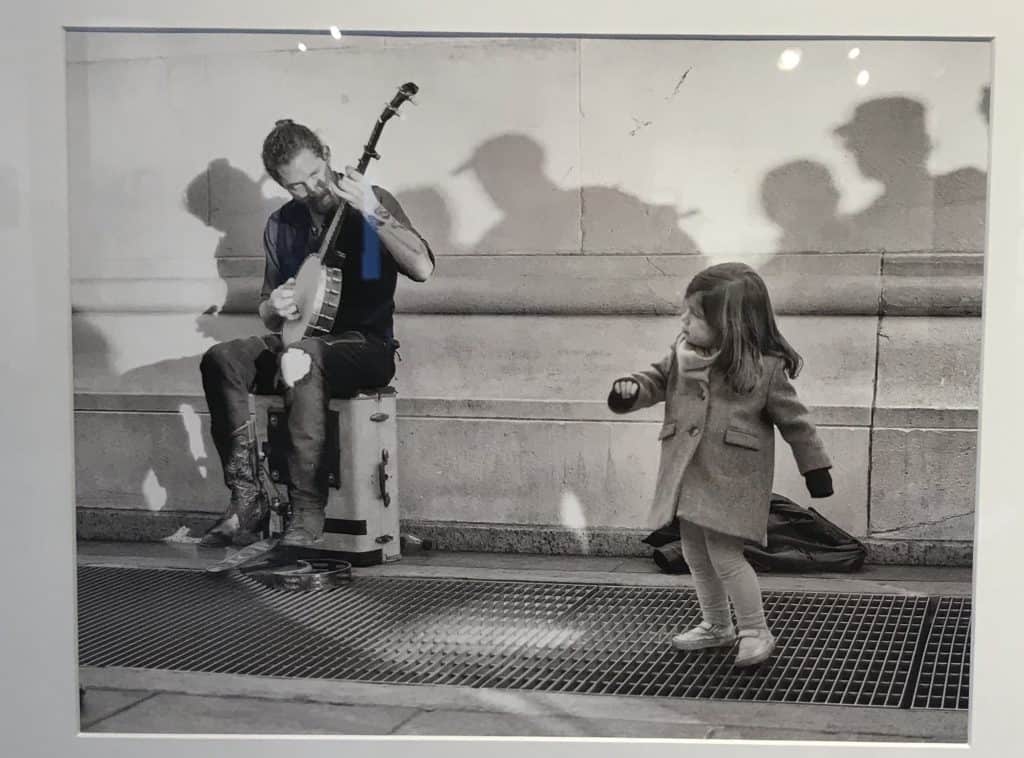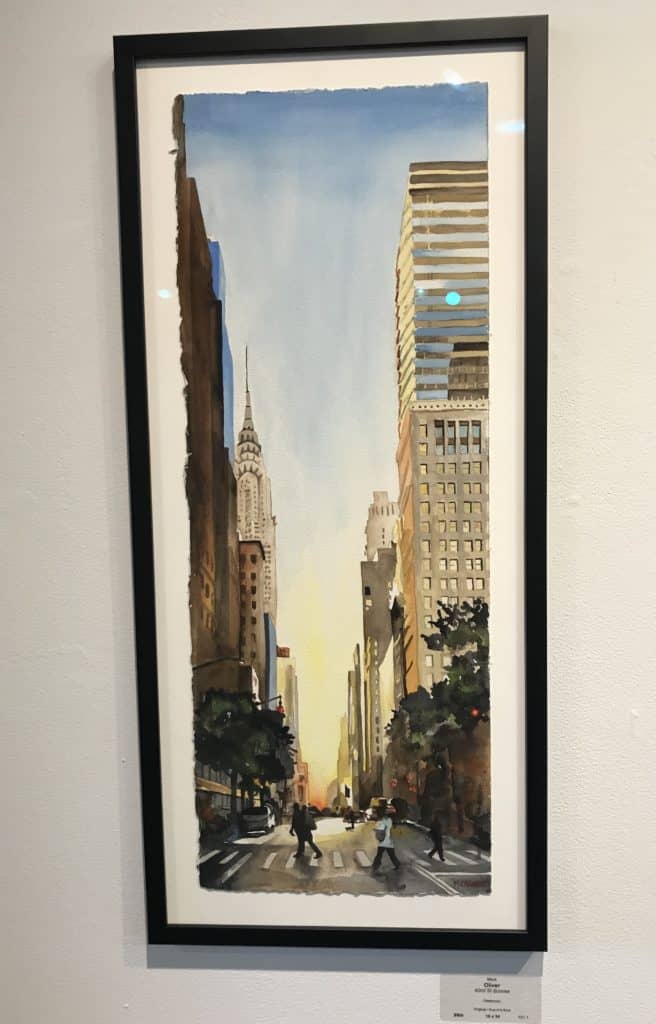The Brooklyn Waterfront Artists Coalition (BWAC – be cool and pronounce it Bee-Whack) opened its sprawling warehouses in the middle of May. Don’t miss your chance to absorb works from Brooklyn’s largest artist-run gallery. I recently strolled through and passed several gems:
Unlike just about every gallery in Manhattan, the works here are reasonably priced. You’ll find spectacularly composed street photographs by Resa Sunshine (Adrian Resa Jones) around $120 and alluring domestic scenes with rough brushstrokes by Isabella Sarra “Glaz.”

On the first floor, you’ll find “Black Orpheus” by Mary Alice Orito. The flat dress raised to a canvas on the vertical wall is made of acrylic, draped canvas, and macramé. Given the humble materials, it’s a surprisingly affecting arrangement that mirrors a dress floating in a river.

The self-taught artist Ed Kent has an alluring piece whose flatline red, yellow, and mostly gray paint would make Barnett Newman proud. What makes the piece different, even by contemporary art standards, is the skeleton of a computer mainframe casually placed in the lower left quadrant. This one is called “Object 202”

George Sand made some unique photographs in a field that’s very hard to innovate within. “Vestige #2” has a digital photograph on an antique cabinet card of a man who’s all but erased saved for his shoes standing near a plant with high resolution. The result is a question-welcoming object; vestige you say, vestige of what? It’s the questioning that helps this piece (and the viewer) come to life.


On the second floor, Tiziana Mazziotto dominates with well-known subjects rendered in a unique tesserae. “The Water Tower” appears to be represented with acrylic, but Mazziotto’s canvas appears to be a quasi-cement slab. The representation, beautiful in and of itself, is given a weighty feel with the physical pairing of such a formidable base.
Mark Oliver showcases finely observed watercolors from the city. “42nd St Sunshine” captures a sunrise in Midtown East. Rising from the ease in a still quiet day, the piece captures the tender side of our dearly beloved concrete jungle.
BWAC’s 2019 Recycling Show

The Recycling Exhibition 2019 is as impressive as ever. Carole Landisman’s “What’s Important is on the Inside” uses old office supply in a sort of Malevich composition. Colors — all pastels of cerise and pewter and pale yellow – appear to be laminated beneath an encaustic white surface. Whether this was Landisman’s intention, it calls to mind a hospital ward and that illness doesn’t surpass personhood.

The sculptor Peter Hiers used torn and ripped highway rubber tire fragments to create a beautiful work in “Declaration of Dependence – Main View.” The elegant lines of the central part of the tires recall the Nike of Samothrace.

Yongsin Cho’s “Abandoned” is another poignant homage to newspapers of yore. Using old newspapers and discarded paintings, Cho made a large mural featuring a close-up of an ambiguous face. The collage never loses its aura of being painted; that it is, in fact, collage is an impressive technical feat.












One Comment
Pingback: Brooklyn Waterfront Artists Coalition their annual recycling show and juried exhibitions. | Global Recycler